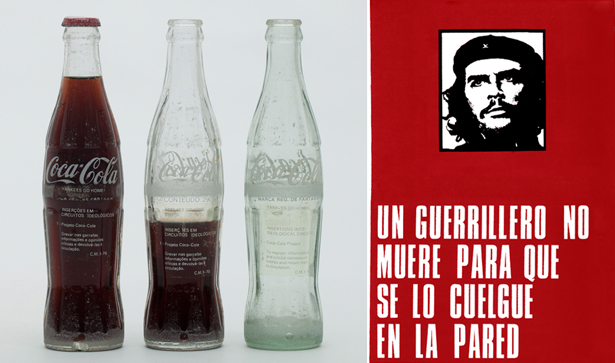From Mendoza we flew directly to Buenos Aries. Instead of staying at a
traditional hotel, we decided to use
airbnb, which is an alternative service where travelers rent out a room or apartment from a local
resident at a competitive price. For this leg of the trip, we rented a studio apartment in the quaint yet urban neighborhood of Recoleta.
The tree lined streets were full of boutique shops, cafes, and residents walking their designer dogs.
What
surprised us the most about Buenos Aries was the resemblance to large Spanish cities. Many
of the buildings were designed in an European style and the majority of the people looked Spanish. We learned that after Spain invaded
Argentina, the Europeans decimated the native
population so thoroughly that they never really mixed much.
We explored the city primarily on foot, heading first to Evita's grave
site. Buenos Aries has several art galleries and we wished we could have
visited more than we did. On a few occasions, we showed up at galleries that were closed. Our favorite exhibit we did see was
Art of Contradictions. Pop, Realisms and Politics. Brazil – Argentina 1960 at Fundación PROA. The exhibit contrasted the differences between popular art in socialist-leaning countries versus its counterpart in capitalist countries. A few of the pieces really got us thinking.
 |
| Paying our respects to Evita |
 |
Coca-Cola vs. Che Guevara.
"A guerrilla fighter does not die to be hung on a wall." |
 |
"Order and Progress"
Claudia Andujar |
Of course we had to experience Argentinean tango while in Buenos Aires. Tango got its start largely in the immigrant community in the lower income area of La Boca. It was later taken to Paris, where it evolved into a more sophisticated dance before it became popular again in Argentina. Although La Boca is still mostly lower income, its two block historic center has become a huge tourist hot spot
featuring street performers, cafes, restaurants, and
souvenir shops. It was fun to watch the street performers but the vibe was pretty artificial. La Boca reminded us of
Fisherman's Wharf and Pier 39 back home: a historic area that played a major role but over the years became a tourist trap devoid of local residents.
Today, most porteños (i.e. Buenos Aires residents) dance at Milongas, which is what they call the tango clubs. Since we did not have any tango background, we took an hour long
introductory tango lesson with a mixed group of travelers from throughout
South America. The package included dinner and a show. Although
the performance was geared towards tourists, it was still very authentic. The dancers where extremely talented and the performance was well
choreographed, in contrast to the street dancers we later saw in La Boca. The performance was purely tango, which is what we wanted.
 |
| Tango on the streets of La Boca. |
 |
| Our first tango class. |
 |
| Professional tango performance |
We used the remainder of our time to wander the streets and eat at cafes and small local restaurants. There were not too many famous sights too see, which was fine with us because that left us more time to eat.
 |
| El Cuarito's famous pizza. |
 |
| Street hot dogs with a choice of dozens of toppings. |
 |
| Traditional mate |
On our last morning we took a four hour bike tour. We learned
that biking has become a important aspect of city planning and a lot of bike lanes have been
added in the past three years. Even coming from one of the top American cities for biking, we were very jealous of Buenos Aries' expansive network of protected
bike lanes. Even so, our bicycle guides wished there were even more bike lanes. We biked to multiple spots in Buenos Aires, where the
guides pointed out important buildings and
explained the historical changes the city has undergone. Our
guides also shared their perspectives on government politics and their country's future. We recommend anyone who knows how to ride a bike to take a similar tour.
 |
| City bike tour. |
 |
| Loving the protected bike lanes. |
We departed Buenos Aries by bus from the main terminal. Its long corridor contained several restaurants, cafes, stores and even a barber. The bus terminal quality surpassed those of some small international airports.












No comments:
Post a Comment